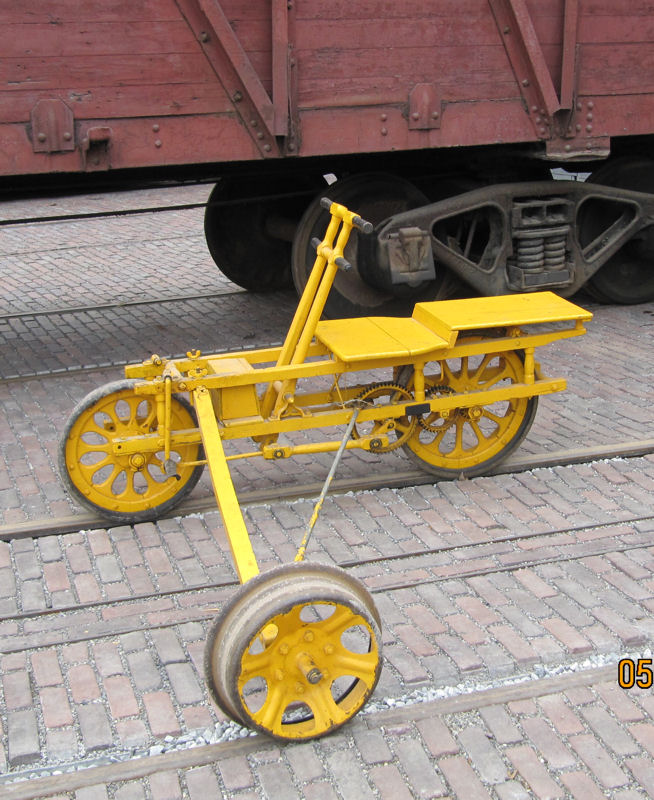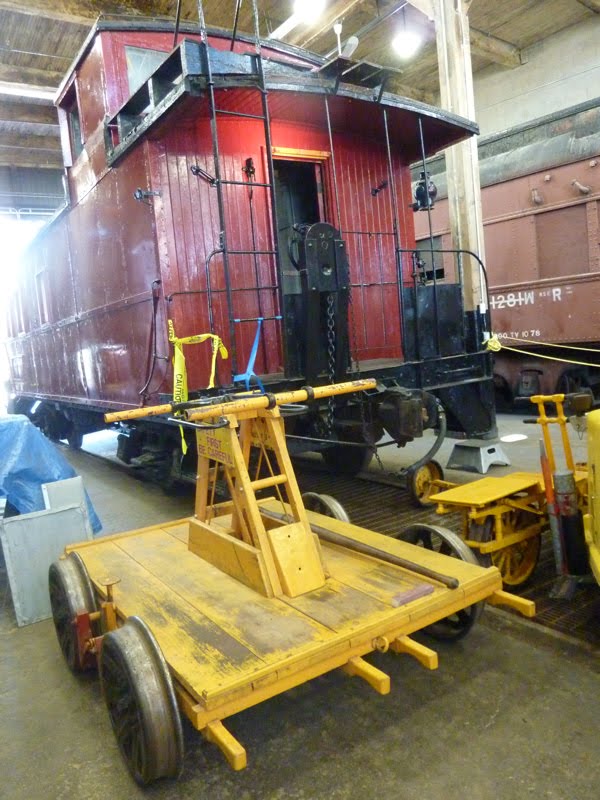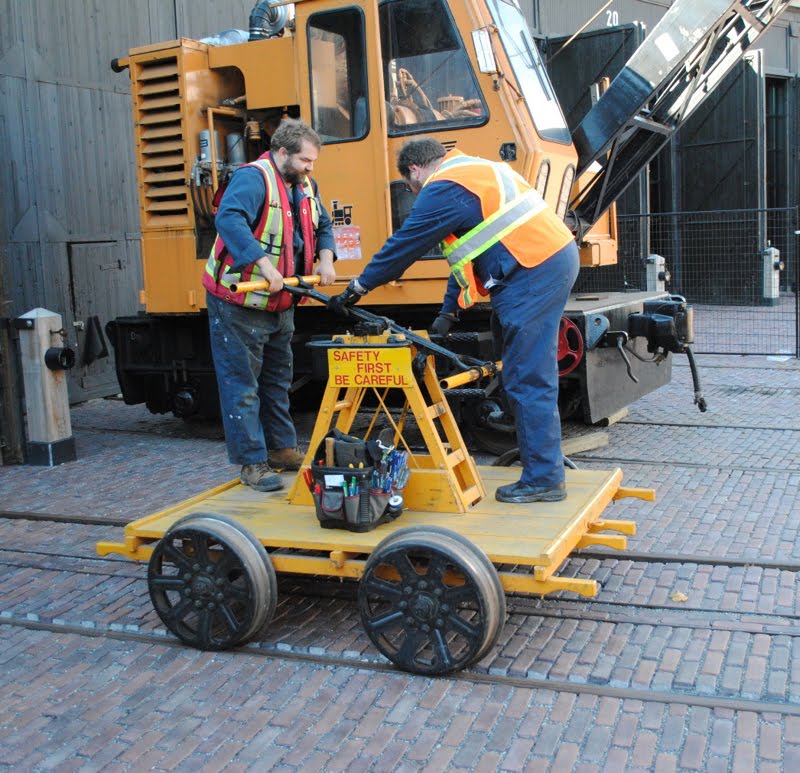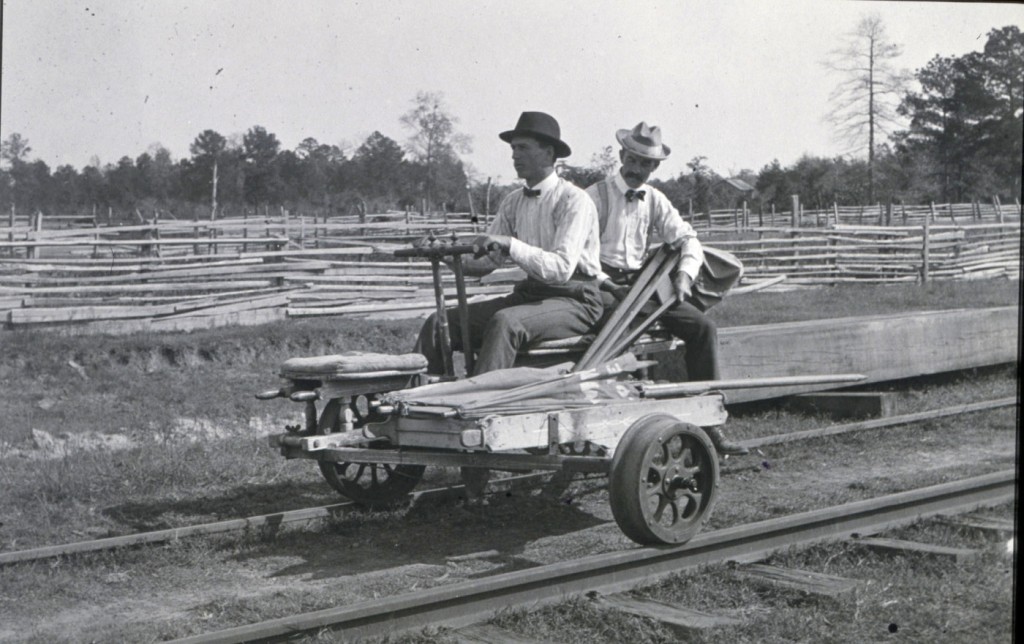The Toronto Railway Museum (TRM) has examples of manually operated railway vehicles called velocipedes and handcars. Velocipedes could be considered a variant of a bicycle with typically three wheels which ran on rails as the operator sat in a seat and pulled back and forth on a lever. At special events we do bring these vehicles out and allow visitors to experience using them. Handcars were small four wheeled platform on which the operators would stand and pump a double-ended lever to move it forward.
History
Wikipedia (http://en.wikipedia.org/wiki/Velocipede) advises that:
“A Velocipede (Latin for “fast foot”) is a human-powered land vehicle with one or more wheels. The most common type of velocipede today is the bicycle. ….. Railroads in North America often made use of a three-wheeled handcar designed to be operated by a single person. This came to be known as a “velocipede”
Wikipedia (http://en.wikipedia.org/wiki/Handcar) advises that:
“A Handcar (also known as a pump trolley, pump car, jigger, Kalamazoo, velocipede, or draisine (powered or unpowered)) is a railroad car powered by its passengers, or by people pushing the car from behind. It is mostly used as a maintenance of way or mining car, but it was also used for passenger service in some cases. A typical design consists of an arm, called the walking beam, that pivots, seesaw-like, on a base, which the passengers alternately push down and pull up to move the car.”





